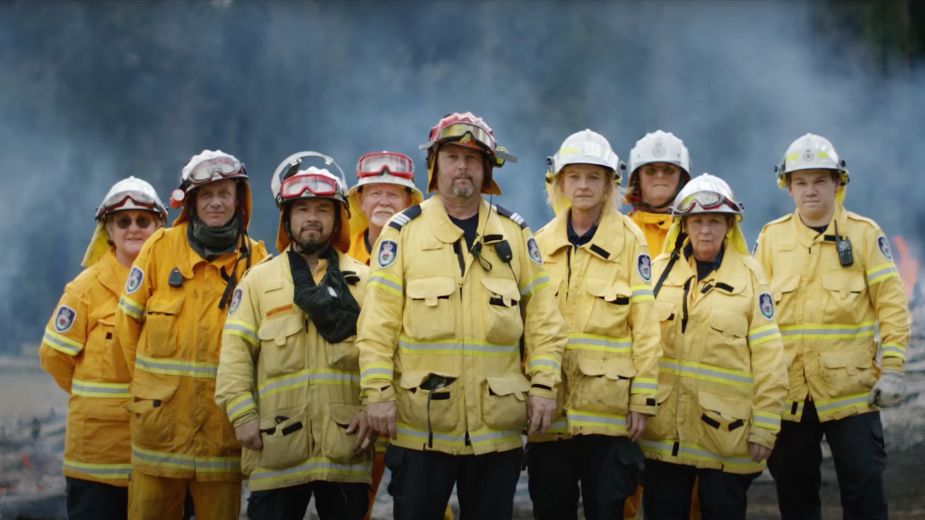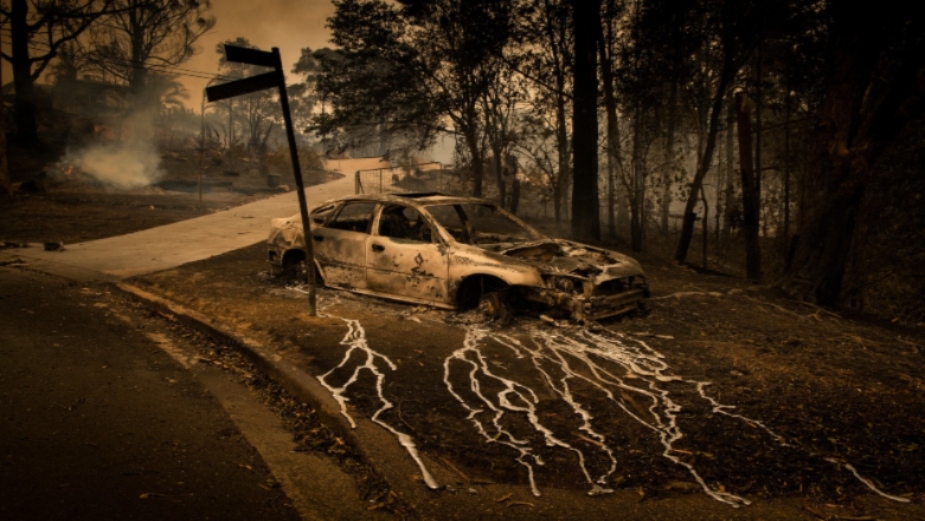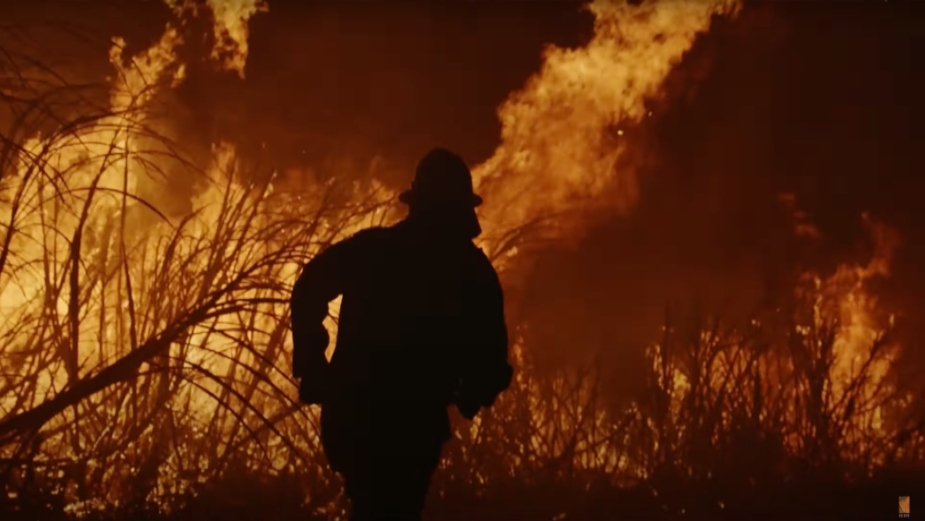
A Fire Inside: How Creativity Takes a Crisis and Turns It into a Volunteer Movement

A Fire Inside has real-life crisis and drama, first-hand accounts of distress and suffering, intense emotions and firefighting action, all elements that make for a riveting plot and engaging viewership. But that’s not what it’s about.
When FINCH embarked on this project with partners NRMA Insurance and The Tuesday Club, it was to incite a strong desire to help and to take action. And it did, garnering nation-wide support in volunteerism. As a result, over 2,500 people joined the Australian Resilience Corp. It was a massive volunteer movement that triggered hope and help. Australians were moved by a strong sense of community to help in whatever way they can, be it in animal welfare, mental health, or rebuilding homes.
“A Fire Inside was a lightning strike moment to engage Australia in a different sort of conversation,” says Adrian Turner, CEO of Disaster Resilience Program, Minderoo Foundation. The foundation had been active in the bushfire rescue efforts, and found a natural alignment with FINCH in its production narrative.
“We were determined to drive real world-impact with this film, so we shared it with them. Together, we decided the film should be used to kickstart their newest initiative, The Australian Resilience Corps, with the ambition to build the world's largest volunteer organisation,” says Camilla Mazzaferro, Head of Entertainment and Executive Producer at FINCH.
The surreal cinematography yielded a raw – yet sensitive – emotive to the scenes that intensified the personal accounts of the survivors. Importantly, it also lent impact to the key narrative on how the community came together to regroup, rebuild and face the future.

LBB> When the horrifying Black Summer fires struck Australia in 2019/2020, what went through your mind?
Luke> Helplessness. We’re in Sydney, and we were seeing red and brown skies for months; seeing ash lapping up onto the shores of the city beaches; and worrying about the air quality as I took my toddler outside for a walk. It was surreal. The scale of the destruction and hardship was overwhelming, and I just didn’t know how to help other than to donate, which can feel very removed.
Justin> To be honest, I was angry. Angry that the world was burning and that not enough would be done about it. But when we started meeting all the brave, selfless individuals who placed their neighbours’ needs before theirs, it became very clear that this wasn’t going to be a film about pointing the finger. It was going to be a film that shined a light on these incredible stories of altruism, and challenged audiences to think about how they could pitch in and help in their own way.
LBB> “If you need help, help someone else.” This was a strong message from the documentary. What’s the deeper meaning to the storyline that you want to convey?
Justin> In the turbulent times we live in, we wanted to show that no matter who you are, you can make a real difference. The heroes of our story are everyday people, yet they all made a real difference in their community. And the interesting thing we found is that by helping others, the characters in our film were able to heal some of their own emotional wounds. That’s something we wanted to get across at the end of the film to incite the spirit of volunteerism: helping people actually makes you feel better!
Luke> We found during the edit and test screenings that people watching the film were moved to action having just gone on the subject's journeys, and seeing the positive power of community when people lent in and did whatever they could to help. Being able to highlight the Australian Resilience Corp as an avenue for people to get involved was a meaningful way to increase the impact of the film beyond the post-screening glow and hopefully make a difference in communities who will inevitably face more disasters, as we’ve just seen in Australia with the terrible floods earlier this year.
LBB> The cinematography and music score certainly captured the emotional mood very well. What other stylistic elements were used to move viewers to action?
Justin> The photography that came out of Black Summer was horrific, yet mesmerisingly beautiful. Those were images that I will never get out of my mind. We wanted to let the audience live in those moments as if they were there, so we developed some techniques with a talented visual effects team led by Quade Biddle to bring them to life. It’s a look you may have seen before in fashion commercials, but we elevated it by 3D mapping the scenes for realistic perspective changes and gave them an otherworldly, ethereal feel. Those moments were meant to be introspective, rather than in your face.
Luke> Matteo Zingales did such a wonderful job on the music score, and Josh Flavell’s cinematography really brought a poignant beauty to the environmental destruction and humanity on the front line. The edit in any documentary is paramount and it was no easy feat for our editor Scott Walmsley to weave all of the characters and themes together whilst always being true to the nuance of the emotional and factual realities.
LBB> A Fire Inside generated an impressive combined reach of over 59 million. How were these numbers achieved?
Luke> It was a huge collaborative effort from Finch; our theatrical distributor Icon, NRMA; The Tuesday Club; Thinkerbell; Initiative; NRMA; Network NINE; and The Minderoo Foundation. There were many talented people behind the scenes who were passionate about getting this story out into the world in an impactful and meaningful way.
LBB> What was it like directing a film that was part of a broader campaign and movement? How did the different outputs engage with the community in different ways?
Luke> As filmmakers, it was wonderful to have the themes and message of the film live beyond the film, especially when you consider the subject matter and the stakes involved for the future of Australian communities. The broader campaign that Nick Worthington orchestrated really amplified the awareness and impact of the film in a way that is not often seen for documentaries.
Justin> Sometimes, a film may be able to convey everything you want to say. But, with a broader campaign, it becomes more of a Venn diagram where there are overlapping themes and messages. For instance, while the film looks at stories of altruism through an emotional lens, the book takes a more scientific dive into why we help. Both lead to the same conclusion and inspire a wider audience to think about how they can help in their community, but they do so in different and complementary ways.

LBB> Over 2,500 people have joined Australian Resilience Corp since the documentary came out. Would you say this is the most important statistic for you?
Justin> This film was always meant to make people think about their responsibility to their local community and it’s been incredible to see so many people joining the Australian Resilience Corp as a result. There are nearly an infinite number of ways in which you can make a difference. Even just being there to listen to someone who’s been through a traumatic experience like this can make a big difference in their lives.
LBB> Looking back at the filming experience, what were your most riveting and haunting takeaways from it? How will they be useful in future projects?
Justin> We saw local news anchors shoving mics in the faces of people with their homes still smouldering in the background, trying to get their shots and soundbites and moving on. That’s not a good way to make a film or a proper way to act in general. We spent a lot of time with the main characters in our film, meeting their families and understanding their struggles on a personal level. This deference for respect and authenticity is something I’ll carry forward for future projects, no matter what the subject matter.
Luke> ‘It’s okay to not be okay’ seems simple to say out loud, but for someone who has had their entire life turned upside down, it’s not so simple to wade through the grief, the guilt or shame that they are going through. Destigmatising the notion of putting your hand up for help has since helped people in my life. We’ve also heard from audiences and even firefighters that the experience of watching the film made them realise there were things they weren’t addressing that needed addressing. Having the opportunity to try and push the needle on mental health and community engagement conservation was something that was special about this project, and I no longer feel as helpless as I did during the fires.













